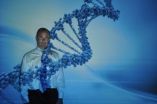(Press-News.org) HUNTSVILLE, TX (6/4/14) -- Researchers at Sam Houston State University have found a genetic characteristic that interacts with childhood adversity to predict higher rates of crime in an incarcerated sample.
The study is the first in a series that will examine contributions of genetic and environmental variations to criminal behavior. Published in Psychiatric Genetics, this study examines the role of monoamine oxidase A (MAOA), which has been linked to aggression, violence, and various types of childhood adversity in prior research. The study found MAOA genotype interacted with childhood adversity to predict self-reported criminal behavior and arrest rates for both property and violent crime.
"These findings indicate that gene-by-environment interactions are important for understanding variation in crime amongst populations with high base rates of criminal activity," said Todd Armstrong, principal investigator of the study.
The study was based on a sample of about 100 inmates from a correctional institution in the Southern United States. Sample members were convicted of a wide variety of charges, including violent crimes, drug offenses, property crimes, disorderly conduct and weapons offenses. In addition to collecting and analyzing DNA, researchers conducted surveys of offenders and examined their criminal histories.
"No one has done this type of research with an incarcerated sample in North America," said Armstrong. "It can help us understand the context and processes that link genes with criminal behavior and provide an avenue for understanding individual variation in the tendency to engage in crime."
In addition to unravelling the links among genes, childhood adversity and crime, the findings may help to develop better intervention programs for at-risk children in the future.
The study was a collaborative effort between the Department of Criminal Justice and Criminology, and the Department of Forensic Science at Sam Houston State University. It was co-authored by fellow faculty members Brian Boutwell and David Gangitano as well as graduate students Shahida Flores, Mary Symonds and Shawn Keller.
The inter-disciplinary approach has led to a new course at Sam Houston State University in Behavioral Genetics, which provides students with an understanding of behavior genetics and the influence of genes and the environment on emotion, personality and behavior.
The research group is currently exploring the relationship between a number of genetic characteristics and different forms of crime and delinquency in the incarcerated sample and among a sample of University students. These studies are considering potential links between genetic characteristics and stalking and the role that genetic characteristics related to serotonin function play in the development of patterns of crime and delinquency.
INFORMATION:
A copy of the full study is available from Psychiatric Genetics at http://journals.lww.com/psychgenetics/toc/publishahead
Genes/adversity linked to crime in incarcerated sample
2014-06-04
ELSE PRESS RELEASES FROM THIS DATE:
Count of new CFCs in the atmosphere rises from 4 to 7
2014-06-04
Scientists at the University of East Anglia have found two new chlorofluorocarbons (CFCs) and one new hydrochlorofluorocarbon (HCFC) in the atmosphere.
The research, published today in the journal Atmosphere, comes after another four man-made gases were discovered by the same team in March.
Scientists made the discovery by comparing today's air samples with air collected between 1978 and 2012 in unpolluted Tasmania, and samples taken during aircraft flights.
Measurements show that all but one of the new gases have been released into the atmosphere in recent years. ...
Astronomers discover ancient worlds from another galaxy next door
2014-06-04
An international team of scientists, led by astronomers at Queen Mary University of London, report of two new planets orbiting Kapteyn's star, one of the oldest stars found near the Sun. One of the newly-discovered planets could be ripe for life as it orbits at the right distance to the star to allow liquid water on its surface.
Discovered at the end of the 19th century and named after the Dutch astronomer who discovered it (Jacobus Kapteyn), Kapteyn's star is the second fastest moving star in the sky and belongs to the galactic halo, an extended cloud of stars orbiting ...
Iron, steel in hatcheries may distort magnetic 'map sense' of steelhead
2014-06-04
CORVALLIS, Ore. – Exposure to iron pipes and steel rebar, such as the materials found in most hatcheries, affects the navigation ability of young steelhead trout by altering the important magnetic "map sense" they need for migration, according to new research from Oregon State University.
The exposure to iron and steel distorts the magnetic field around the fish, affecting their ability to navigate, said Nathan Putman, who led the study while working as a postdoctoral researcher in the Department of Fisheries and Wildlife, part of OSU's College of Agricultural Sciences.
Just ...
Two planets orbit nearby ancient star
2014-06-04
Washington, D.C.— An international team of astronomers, including five Carnegie scientists, reports the discovery of two new planets orbiting a very old star that is near to our own Sun. One of these planets orbits the star at the right distance to allow liquid water to exist on its surface, a key ingredient to support life. Their work is published by Monthly Notices of the Royal Astronomical Society.
Kapteyn's Star, named after the Dutch astronomer, Jacobus Kapteyn, who discovered it at the end of the 19th century, is the second fastest-moving star in the sky and belongs ...
Deep sea fish remove 1 million tonnes of CO2 every year from UK and Irish waters
2014-06-04
Deep sea fishes remove and store more than one million tonnes of CO2 from UK and Irish surface waters every year, according to a new study led by the University of Southampton.
This natural carbon capture and storage scheme could store carbon equivalent to £10 million per year in carbon credits.
Fish living in deep waters on the continental slope around the UK play an important role carrying carbon from the surface to the seafloor.
It is assumed that deep water fishes all depend on particles that fall from the surface for their energy. These bottom-living deep water ...
The Lancet Psychiatry: Study shows increasing rates of premature death and violent crime in people with schizophrenia since 1970s
2014-06-04
New research, published in The Lancet Psychiatry journal, shows that rates of adverse outcomes, including premature death and violent crime, in people with schizophrenia are increasing, compared to the general population.
The results come from a unique study, led by Dr Seena Fazel, at Oxford University, UK, which analyses long-term adverse outcomes – including conviction for a violent crime (such as homicide or bodily harm) premature death (before the age of 56), and death by suicide – between 1972 and 2009 in nearly 25,000 people in Sweden diagnosed with schizophrenia ...
Pneumococcal conjugate vaccine is effective for preventing community-acquired pneumonia
2014-06-04
A 10-valent pneumococcal conjugate vaccine (PCV) is effective in reducing the number of new cases of likely-bacterial community-acquired pneumonia in infants in Latin America, according to a study published in this week's PLOS Medicine. Xavier Sáez-Llorens and colleagues from Department of Infectious Diseases, Panama found that the 10-valent PCV reduced the number of new cases of likely-bacterial community-acquired pneumonia in infants by 22% (95% CI: 7.7, 34.2) compared to those who received the control vaccine in the per-protocol cohort at the pre-planned interim analysis ...
Place and cause of death in centenarians: A population-based observational study in England
2014-06-04
Centenarians are more likely to die of pneumonia and frailty or "old age" and less likely to die of the chronic conditions often associated with old age, such as cancer or ischemic heart disease, compared with older adults younger than 100 years, according to a study by Catherine Evans and colleagues from King's College London, London, UK. Centenarians were most likely to die in a care home (61%) or hospital (27%) and less likely to die at home (10%) or in hospice care (0.2%). Higher care bed capacity was associated with fewer deaths of centenarians in hospital.
The ...
New health services needed for rise in 100-year-olds
2014-06-04
Over 35,000 people lived to 100 years or more in England over the last ten years, with a large proportion subsequently dying from frailty exacerbated by pneumonia, according to a new study by King's College London. With the number of centenarians set to grow, end-of-life care needs to be tailored to the increasing frailty in this age group, warn the King's palliative care researchers. Boosting care home capacity and planning health services for the rise in centenarians could help to reduce reliance on hospital admission at the end of life and ensure a better quality of ...
Unexpected diversity of egg yolk proteins play a key role in ant sociality and castes
2014-06-04
The social insects, including bees, wasps, ants and termites have developed a highly advanced society where division of labor amongst workers to serve the queen's reproduction has long fascinated biologists who have wanted to uncover the molecular pathways driving the complex behavior of insect societies.
In the advanced online edition of Molecular Biology and Evolution, Claire Morandin et al. performed molecular evolutionary analyses on the egg yolk forming protein, Vitellogenin (Vg), and its many forms, amongst seven Formica ant species. Vitellogenin is known to play ...





